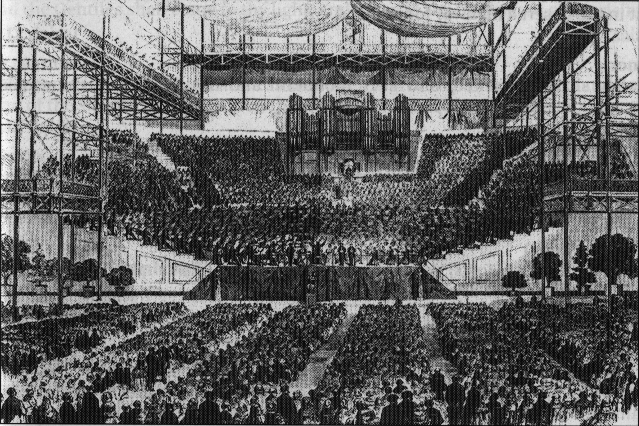The Crystal Palace in London became the site of choice for Handel displays in the second half of the 19th century. The high point—or low point, depending on how you view these things—came in 1883 when Sir Michael Costa, a conductor much chastised by critics for lapses of taste (his additions to the score of Messiah included crashing cymbals and that sort of thing), stood on the podium before an ocean of 500 players, 4,000 singers, and an audience of 87,769. It was just then that Thomas Edison’s phonograph came into existence, and, needless to say, somebody thought to record one of these mammoth Handel performances. The Edison cylinder made at the Crystal Palace on June 30, 1888, became not only the first recording of classical music ever made, but also the first on-location recording. It had to be on location, of course, since one could not quite fit 4,5000 performers into a recording studio—then or now!
James M. Keller, “Doing It Up Big”
